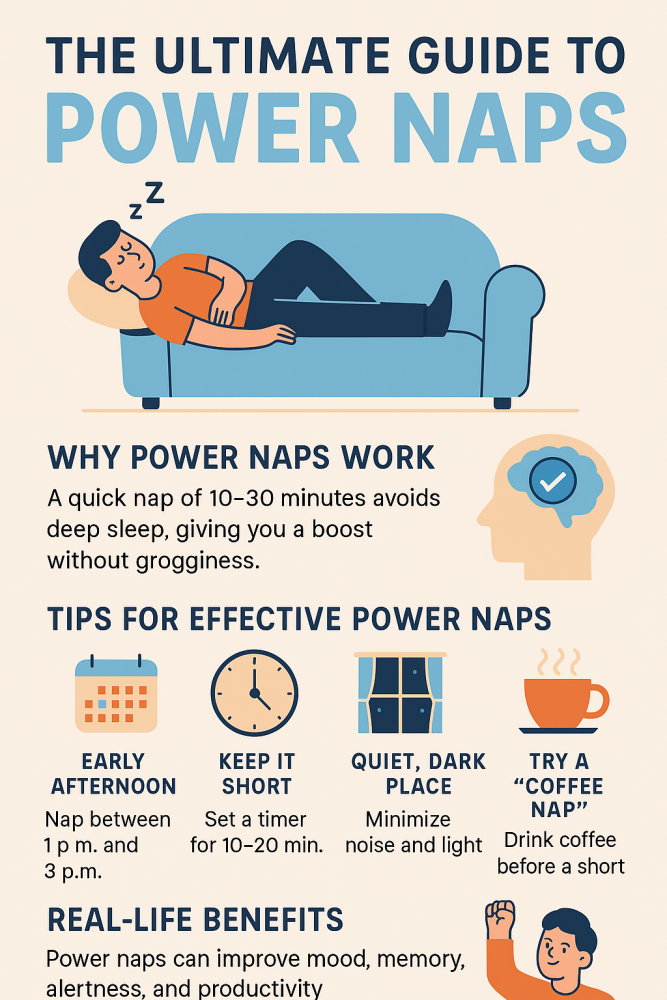Mindfulness can bring a sense of calm and clarity into everyday life. Many people seek simple techniques to help manage stress and support overall wellness. In this article, I check out 10 simple mindfulness techniques designed for everyday wellness and offer practical advice on how to incorporate them into your daily routine.

Introduction to Mindfulness and Everyday Wellness
Mindfulness is about paying attention to the present moment without judgment. It is a practice that can help you manage stress and foster emotional balance. Whether you are new to mindfulness or have been practicing for a while, taking your awareness further can deepen your insight and take your sense of well-being up a notch.
Everyday wellness benefits are not limited to meditation cushion time. Mindfulness can be integrated into daily activities, making it easier to stay centered even during busy moments. By regularly practicing mindfulness, you can notice small improvements in concentration, mood, and overall quality of life.
Core Principles of Mindfulness
At its heart, mindfulness means being fully present. This involves noticing the sensations in your body, listening to your thoughts as they arise, and observing your surroundings without immediate reaction. These principles are simple yet transformative when applied consistently.
This approach is about accepting things as they are. Instead of trying to escape the discomfort of a busy day or a stressful moment, mindfulness encourages a gentle curiosity towards your feelings and experiences. This nonjudgmental focus can not only lessen anxiety but also give a boost to your emotional resilience.
Getting Started with Mindfulness: 10 Simple Techniques
For anyone curious about integrating mindfulness into everyday life, trying out specific techniques is a useful place to begin. Below is an ordered list of 10 straightforward mindfulness practices that work well for beginners and those looking to refresh their routine.
- Mindful Breathing: Focus on the sensation of air entering and leaving your body. A few minutes of doing this can help you center your mind, reduce stress, and prepare you for the day.
- Body Scan Meditation: Lie down or sit comfortably and slowly direct your attention to different parts of your body. This helps you understand where tension might be building and encourages relaxation.
- Mindful Walking: Whether you are strolling in a park or walking to your office, pay attention to the movement of your legs, the feeling of the ground underfoot, and the rhythm of your breath. This practice turns an everyday activity into a grounding experience.
- Mindful Eating: Focus on the flavors, textures, and aromas of your food. Eating slowly and savoring each bite can transform your relationship with food and promote digestive health.
- Gratitude Journaling: Spend a few minutes writing down things you appreciate. This exercise helps shift your focus toward positive aspects of your day, fostering a more balanced outlook.
- Mindful Listening: During a conversation or when enjoying nature, pay attention to the sounds around you. This deliberate focus can boost interpersonal connections and deepen your appreciation for subtle details in your environment.
- Mindful Stretching: Incorporate gentle stretches with a focus on your breathing. This not only improves flexibility but also brings awareness to how your body feels during movement.
- Mindful Pauses: Integrate short breaks during your day to simply sit and observe. Even one or two minutes of quiet observation can restore calm and clarity amidst a hectic schedule.
- Nature Observation: Take time to focus on natural surroundings. Whether it’s watching the clouds or listening to the rustling leaves, this practice helps you tune into the beauty of the world around you.
- Digital Detox Moments: Set aside time during which you put away your devices and immerse yourself in the present. This detachment from screens promotes mental clarity and reduces overstimulation.
These techniques are designed to be easy to implement. They do not require lengthy periods or special equipment, just a willingness to slow down and try something new. Even inserting one mindfulness practice into your routine can lead to noticeable improvements in your sense of balance and calm.
Practical Considerations for a Mindfulness Routine
While mindfulness techniques are simple, developing a regular practice sometimes presents challenges. It may seem tricky to find time, adjust your environment, or overcome internal resistance. Understanding and addressing these practical considerations can make mindfulness a more natural part of your day.
Finding Time for Practice: Even on busy days, carving out a few minutes can make a difference. Little breaks spent on mindful breathing or a quick body scan can help you relieve tension and refocus your mind. By planning these moments into your schedule, mindfulness becomes less of a chore and more of a routine ritual.
Setting the Environment: Having a quiet spot to practice can greatly improve the experience. This doesn’t mean you need a dedicated meditation room, but even a corner with a comfortable seat and a few calming elements can signal to your brain that it’s time to slow down and reflect.
Dealing with Distractions: Distractions are common, especially when you are just starting out. Instead of getting frustrated by wandering thoughts, gently guide your focus back to your breathing or the sensations in your body. Over time, you’ll find that it gets easier to maintain attention and that moments of stillness become more plentiful.
These practical tips are intended to help you establish a mindfulness habit that fits naturally into your day. Consistency, even in small doses, contributes to building a sustainable practice that supports overall wellness.
Advanced Tips and Tricks for Deepening Your Mindfulness Practice
For those who already have a basic mindfulness practice, there are ways to take your experience further. Building on the simple techniques, you can check out deeper practices that encourage sustained focus and emotional insights.
Incorporate Mindfulness into Routine Activities: Once you get comfortable, try applying mindfulness to tasks like washing dishes, taking a shower, or commuting. Viewing these mundane activities as opportunities for mindful engagement transforms them into techniques for personal growth.
Combine Practices: Experiment with merging two or more mindfulness techniques. For example, you could combine mindful walking with mindful listening by taking a walk in nature and really tuning in to the surrounding sounds. This combination of practices invites a richer sensory experience.
Use Mindfulness Aids: Consider using meditation apps or audio guides to extend your practice. These tools can offer new guided meditations, timers, and reminders to help maintain focus during practice.
Regular Reflection and Journaling: Keeping a mindfulness journal where you note your experiences can help you understand subtle changes in your perspective. Reflecting on these moments is not only therapeutic but also highlights your progress over time.
Incorporating these more advanced practices may require additional time and patience. However, a deepened mindfulness routine can provide greater insights into your emotional patterns and improve your overall well-being even further.
Everyday Benefits of a Mindful Routine
Simple mindfulness practices can have a big impact on various aspects of your daily life. The benefits of mindfulness are both immediate and long-term, touching on emotional, physical, and mental well-being.
One of the most noticeable effects is improved stress management. Moments of mindful breathing or nature observation interrupt the cycle of stress and anxiety, offering a reset button during hectic days. This practice helps you remain composed and better able to handle unexpected challenges.
Other benefits include improved concentration. As you grow more comfortable redirecting your focus, you may find that your ability to concentrate in work or study improves. A regular mindfulness practice can also lead to better sleep patterns, a more balanced mood, and a heightened sense of gratitude for everyday life.
These everyday benefits compound with regular practice. When you integrate mindfulness into your routine, small changes build up over time, contributing to a healthier lifestyle and a more positive outlook.
Frequently Asked Questions
Many people have questions when first exploring mindfulness techniques. Below are some common questions and practical answers to help you get a clearer picture of how mindfulness can work for you.
Q: What if my mind keeps wandering when I try to focus?
A: It is completely normal for the mind to wander. When this happens, gently acknowledge the distraction and bring your focus back to your breathing or the activity at hand. Over time, this practice will improve your concentration.
Q: How long should I practice mindfulness each day?
A: Even a few minutes daily can be beneficial. As you become more comfortable, you might naturally want to extend your practice. The key is to start small and build consistency over time.
Q: Can mindfulness help with stress and anxiety?
A: Yes, many individuals find that regular mindfulness practice helps reduce stress and anxiety. It allows you to observe your feelings without immediate reaction, which can lower tension and encourage a calm approach to challenges.
Q: Do I need any special equipment or a quiet room to practice mindfulness?
A: No special equipment is required. While a quiet space can be helpful, mindfulness can be practiced almost anywhere. Even brief moments of awareness during daily activities contribute to your overall practice.
Final Thoughts on Incorporating Mindfulness into Your Daily Life
Mindfulness techniques offer a practical and accessible way to boost your everyday wellness. The 10 simple techniques discussed in this article are easy to implement and can gradually change the way you interact with your daily environment.
When practiced consistently, mindfulness brings clarity, reduces stress, and improves overall mental and physical well-being. It is not about completely transforming your life overnight. It is about taking small, conscious steps toward greater awareness and self-care.
Kicking things off on a mindfulness ride is like learning a new language. One where the vocabulary is built on the sensations, thoughts, and feelings of the present moment. As you continue to practice, you may find that these techniques become second nature. They weave a thread of calm throughout the fabric of your daily experiences.
Your mindfulness practice is personal and will evolve with time. Embrace the small victories and be patient with yourself as you experiment with different techniques. Every mindful breath is a step toward a more centered and peaceful life. By integrating these simple techniques into everyday routines, you nurture an ongoing state of wellness that supports resilience in the face of daily challenges. Start with a single mindful breath and see where it leads you. The journey to lasting wellness begins with a commitment to being present, one moment at a time.
Making Mindfulness a Lifestyle
Beyond the specific practices already discussed, there is a broader lifestyle approach that can truly transform how you experience each day. Integrating mindfulness into your lifestyle means finding ways to incorporate present moment awareness in every aspect of your existence, from your work to your leisure time. It is about making conscious choices that reflect a deep commitment to self-care and understanding.
This approach might involve establishing a morning routine that sets a positive tone for the day. Consider starting with a few minutes of mindful breathing or gentle stretching. As you move through your day, pause frequently to check in with your feelings and thoughts. Remember that mindfulness isn’t confined to formal meditation sessions; it can be practiced during mundane tasks like cooking, cleaning, or even during a casual conversation.
Additionally, engaging in reflective practices like keeping a daily journal can be very important. Documenting your experiences provides an opportunity to track your progress and notice subtle shifts in your mood and focus. Over time, these small reflections can add up to meaningful changes in your overall well-being. It is really important to view these moments of awareness not just as exercises, but as integral parts of a wholesome, balanced lifestyle.
Many people also find that sharing their mindfulness practice with friends, family, or a community group can create added motivation. Discussing what works and what doesn’t can help you fine-tune your practice and inspire others to get involved. By making mindfulness a social as well as personal practice, you open the door to creating a support network that fosters growth and resilience.
Ultimately, making mindfulness a lifestyle is about embracing the present and recognizing that every moment counts. With time, you may start to see improvements not only in stress management but also in your overall quality of life. Keep exploring new techniques, adjust your routines as needed, and allow mindfulness to become a natural, engrained part of how you live day to day.
Here are more links to related articles that can also be found on this website:
- Mindful eating can complement physical mindfulness; here’s a list of high-protein foods for seniors.
- Explore how plant-based eating supports healthy aging.
- Alternatively, some seniors explore carnivore diets for health optimization.







Leave a Reply